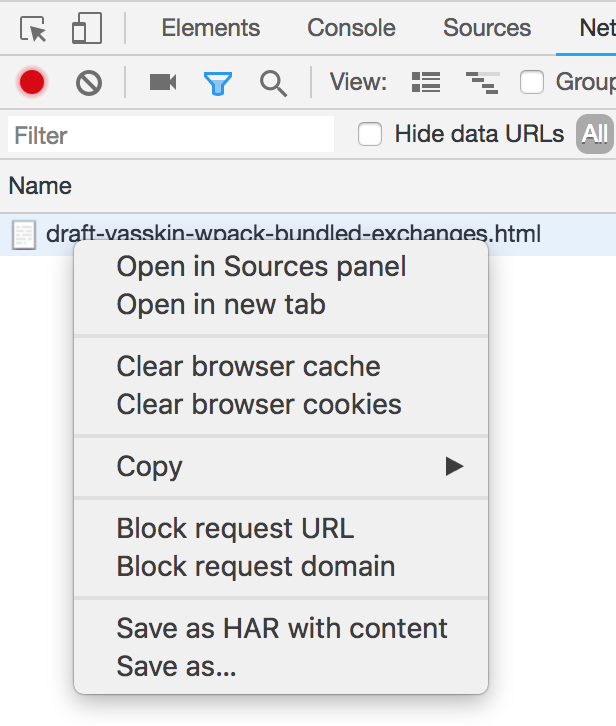This directory contains a reference implementation of the Web Bundles spec.
We currently provide three command-line tools: gen-bundle, sign-bundle and
dump-bundle.
gen-bundle command is a bundle generator tool. gen-bundle consumes a set of
http exchanges (currently in the form of
HAR format, URL
list file, or static files in a local directory), and emits a web bundle.
sign-bundle command attaches a signature to a bundle. There are two supported
ways to sign: using signatures section or integrity block. sign-bundle takes
an existing bundle file, a private key and possibly a certificate, and emits a
new bundle file with cryptographic signature added.
dump-bundle command is a bundle inspector tool. dump-bundle dumps the
enclosed http exchanges of a given web bundle file in a human readable form.
You are also welcome to use the code as golang lib (e.g.
import "github.com/WICG/webpackage/go/bundle"), but please be aware that the
API is not yet stable and is subject to change any time.
golang environment needs to be set up in prior to using the tool. We are testing the tool on latest golang. Please refer to Go Getting Started documentation for the details.
We recommend using go install (Golang 1.18+) to install the command-line tool.
go install github.com/WICG/webpackage/go/bundle/cmd/...@latest
gen-bundle generates a web bundle. There are three ways to provide a set of
exchanges to bundle; by a HAR file, by a URL list, and by a local directory.
These command-line flags are common to all the three options:
-versionspecifies WebBundle format version. Possible values are:b2(default) andb1.-primaryURLspecifies the bundle's main resource URL. This URL is also used as the fallback destination when browser cannot process the bundle. If bundle format isb1, this option is required.-manifestURLspecifies the bundle's manifest URL. This option can be specified only for bundle versionb1.-ospecifies name of the output bundle file. Default file name if unspecified isout.wbn.-headerOverrideadds additional response header to all bundled responses. Existing values of the header are overwritten.
One convenient way to generate HAR file is via Chrome Devtools:
- Open DevTools, navigate to Network panel.
- Make sure that "Disable cache" box is checked.
- Reload the page.
- Right click on any resource and select "Save as HAR with content".
Once you have the har file, generate the web bundle via:
gen-bundle -har foo.har -o foo.wbn -primaryURL https://example.com/
gen-bundle also accepts -URLList FILE flag. FILE is a plain text file with
one URL on each line. gen-bundle fetches these URLs and put the responses into
the bundle. For example, you could create urls.txt with:
# A line starting with '#' is a comment.
https://example.com/
https://example.com/style.css
https://example.com/script.js
then run:
gen-bundle -URLList urls.txt \
-primaryURL https://example.com/ \
-o example_com.wbn
Note that gen-bundle does not automatically discover subresources; you have to
enumerate all the necessary subresources in the URL list file.
You can also create a bundle from a local directory. For example, if you have
the necessary files for the site https://www.example.com/ in static/
directory, run:
gen-bundle -dir static -baseURL https://example.com/ -o foo.wbn -primaryURL https://example.com/
If -baseURL flag is not specified, resources will have relative URLs in the
generated bundle file.
sign-bundle is split into the following sub-commands:
signatures-sectionintegrity-blockdump-id
sign-bundle signatures-section takes an existing bundle file, a certificate
and a private key, and emits a new bundle file with cryptographic signature for
the bundled resources added.
It updates a bundle attaching a cryptographic signature of its exchanges. To use
this tool, you need a pair of a private key and a certificate in the
application/cert-chain+cbor format. See
signatures-section extension and
go/signedexchange for more information on how to
create a key and certificate pair.
Assuming you have a key and certificate pair for example.org, this command
will sign all exchanges in unsigned.wbn whose URL's hostname is example.org,
and writes a new bundle to signed.wbn.
sign-bundle signatures-section \
-i unsigned.wbn \
-certificate cert.cbor \
-privateKey priv.key \
-validityUrl https://example.org/resource.validity.msg \
-o signed.wbn
sign-bundle integrity-block takes an existing bundle file and an ed25519
private key, and emits a new bundle file with cryptographic signature added to
the integrity block.
It updates a bundle prepending the web bundle with an integrity block containing a stack of signatures over the hash of the web bundle. To use this tool, you need an ed25519 private key in .pem format.
An unencrypted ed25519 private key can be generated with:
openssl genpkey -algorithm Ed25519 -out ed25519key.pem
For better security, one should prefer using passphrase-encrypted ed25519 private keys. To encrypt an unencrypted private key, run:
# encrypt the key (will ask for a passphrase, make sure to use a strong one)
openssl pkcs8 -in ed25519key.pem -topk8 -out encrypted_ed25519key.pem
# delete the unencrypted key
rm ed25519key.pem
sign-bundle integrity-block \
-i unsigned.wbn \
-privateKey encrypted_ed25519key.pem \
-o signed.swbn
In case you chose to use an encrypted private key, it will be prompted during
the signing process. If one wants to use the tool programmatically (e.g. as
part of their DevOps pipeline), they can bypass the prompt by setting the
password into an environment variable named WEB_BUNDLE_SIGNING_PASSPHRASE.
See integrityblock-explainer for more information about what an integrity block is.
sign-bundle dump-id is a helper tool to print out the
Web Bundle ID
which is corresponding to the given ed25519 key. The ID is
base32-encoded lowercase representation of the ed25519 public key with a
predefined suffix.
Web Bundle ID can be used for example as the origin of an Isolated Web App.
sign-bundle dump-id -privateKey privkey.pem
or
sign-bundle dump-id -publicKey pubkey.pem
dump-bundle dumps the content of a web bundle in a human readable form. To
display content of a bundle file, invoke:
dump-bundle -i foo.wbn
dump-bundle doesn't support web bundles signed with integrity block.
Bundles generated with gen-bundle can be opened with web browsers supporting
web bundles.
Chrome (79+) experimentally supports Web Bundles with some limitations. See this document for more details.
